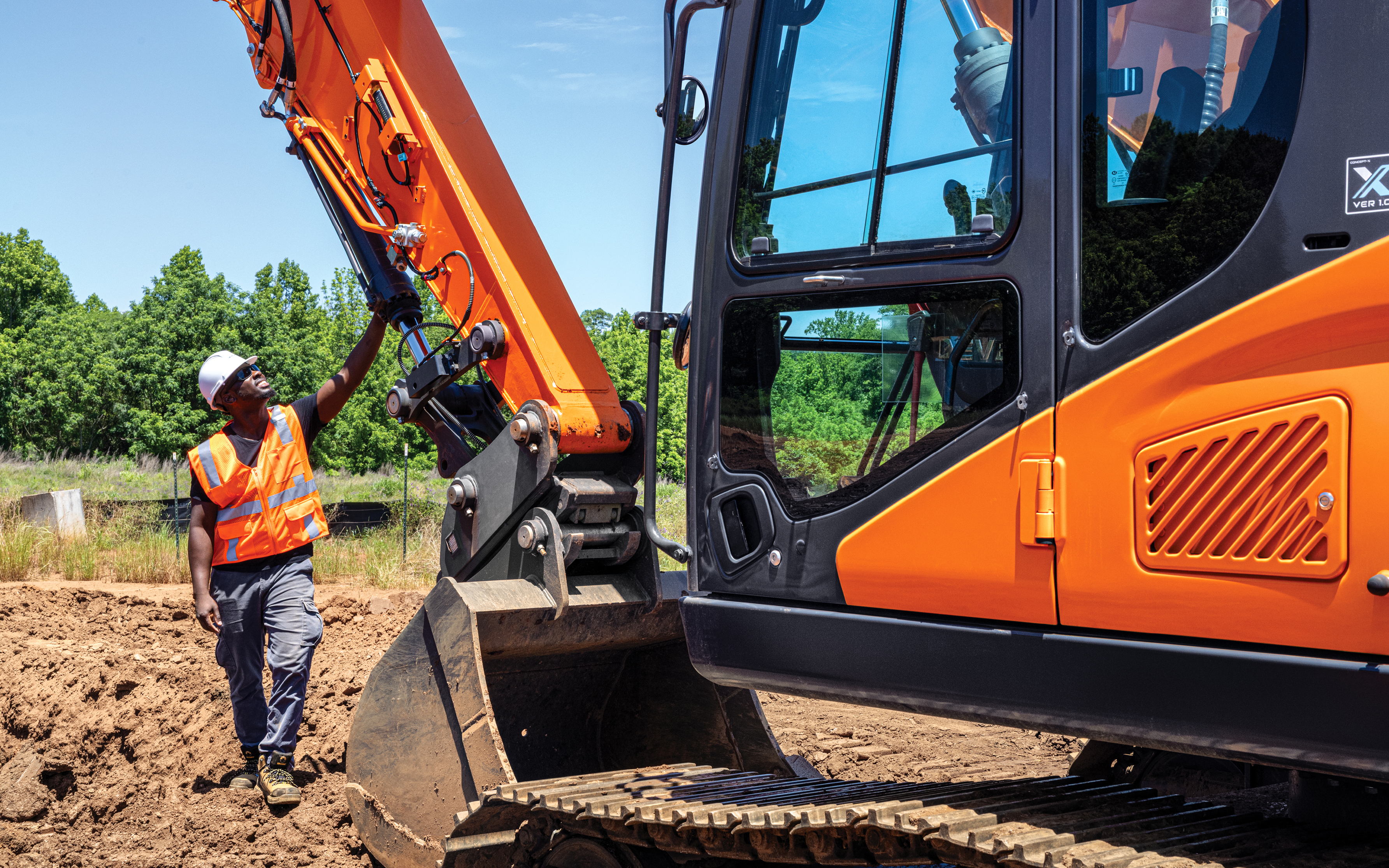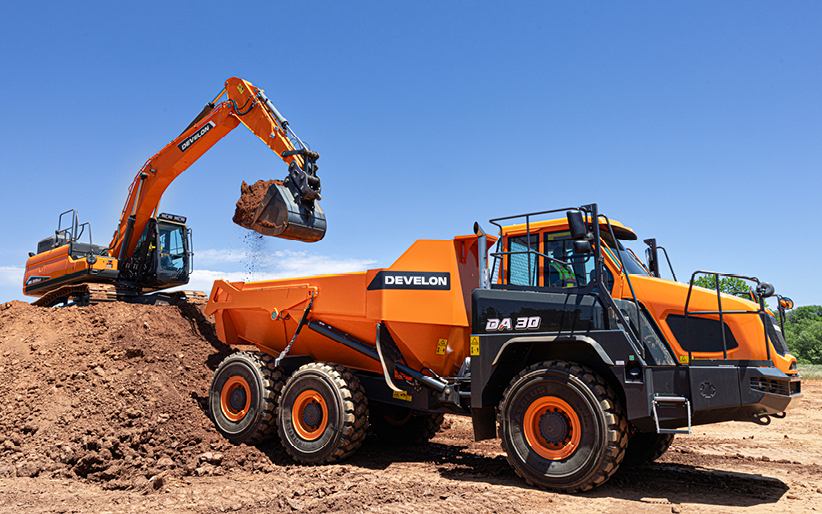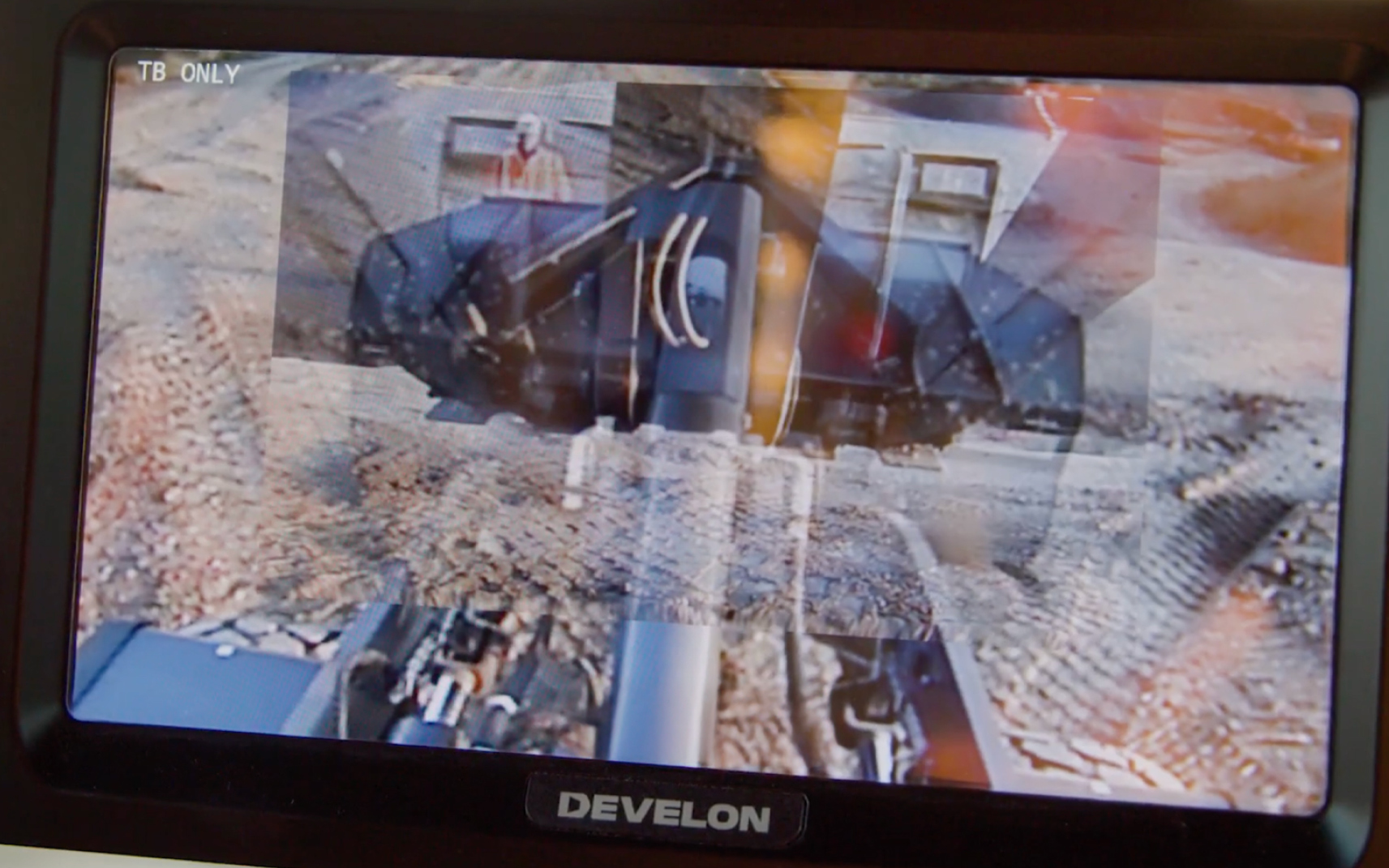Remember the claw game at the arcade when you were growing up? You skillfully maneuvered a joystick to move the claw just above your desired prize. The claw lowered, and the grapple either grabbed your prize or collapsed empty-handed.
The bigger versions of the claw game are called material handlers. You can typically find material handlers in the scrap industry at recycling facilities or bulk waste processing centers. These machines are the backbone of the centers and work tirelessly to ensure that the material is processed in a timely manner.
What Is Material Handling Equipment?
Material handlers are specialized bulk material handling equipment. The machines manage bulk solids collection, handling, sorting, processing, recycling and disposal. Resembling excavators, material handlers work in the recycling industry and waste management applications.
Scrap material handlers process various types of recyclables. These include ferrous and non-ferrous metal, plastic, cardboard and paper. Material handlers are designed with an arm and a boom, and they are normally paired with an attachment.
Specialty attachments are available for material handlers to make work more efficient. Operators can grab, lift and unload objects using attachments controlled by joysticks. Fine-tuned hydraulic systems enable operators to skillfully place objects for bulk-loading containers. Shears are also available so operators at recycling facilities can cut large pieces of metal into smaller, more manageable sections. This is sometimes a requirement for scrap metal before it’s sent to be melted in a furnace and further refined.
How to Spec Material Handling Machines
When you’re evaluating your material handler needs, keep these steps in mind.
Consider Your Requirements
Evaluate the types of material your company will be handling, the volume of waste and the ideal capacity. Are you handling bulky items, loose materials or a combination of both? What is the average size and weight of the materials your machine will lift?
Evaluate Reach and Height Requirements
Material handlers are often used to unload or load materials. When material comes into your facility, the machine may remove it from a truck or railcar. Conversely, when it’s time to ship the items, a material handler will be called upon to lift and load them. Consider how far the machine needs to reach and any height requirements.
Choose Between Tires and Tracks
The choice between wheeled (tire) and tracked material handlers will depend on the ground conditions of your facility. Wheeled material handlers are ideal if your facility has finished surfaces like concrete or asphalt. Tracked material handlers perform best on dirt and on ground that gets soft from rain or snow.
Pick Your Cab Configuration
One popular feature of some material handlers is a hydraulic rising cab. While many material handler cabs are fixed, consider a hydraulic rising cab. Operators can enter the cab at ground level, then raise the cab for enhanced visibility when unloading or loading materials.
Select Attachments
Your choice of attachment will likely be dictated by the material your machine is handling. Grapples are among the most common type of attachment paired with a material handler. Operators can easily open and close grapples using the joystick control. Magnet attachments can efficiently connect to and help lift ferrous (magnetic) metals such as iron and steel. If your company regularly handles non-ferrous (non-magnetic) metals such as aluminum, copper and brass, then a clamshell bucket is a smart alternative.
Material handlers paired with attachments can efficiently place scrap into bulk material handler systems. These include screw conveyors, bucket elevators or conveyor belts for transporting to another stage of the sorting process. Many recycling facilities use engineered systems to optimize the processing of recyclable materials.
Scrap metal recycling centers often use shear attachments with material handlers and excavators. The shear attachments have powerful blades to cut through metal, such as steel and aluminum, creating smaller pieces for easier handling and transportation.
Review Safety Features
Today’s material handlers are sophisticated machines. New safety features enable operators to work more confidently. Features like the standard rearview camera and optional around view monitor (AVM) camera system enhance operator visibility of the work area. Object detection systems alert operators when an object may be too close to the machine.
Explore Remote Monitoring Options
Material handlers come standard with MY DEVELON fleet management system for remote monitoring, diagnostics and predictive machine maintenance. This means you can monitor the health of your material handler and respond faster to machine issues. In most cases, your dealer is also alerted when there is an issue with your machine. Track reports on material handler usage and fuel consumption to help better understand your operator’s behavior and operating costs.
Other Waste Processing Equipment
Wheel loaders and pallet jacks are other types of high-quality equipment commonly used for recycling. Wheel loaders are often paired with a grapple bucket to grab, lift, carry and unload bulk waste. A pallet fork attachment is used to unload pallets from trucks or place items on pallet racks until they can be disposed of or recycled.
Learn more about DEVELON material handlers and wheel loaders.
Fine-tuned hydraulic systems enable operators to skillfully place objects for bulk-loading containers."Thomas Lee, Product Strategy Manager

By Thomas Lee, Product Strategy Manager
Thomas Lee is a product strategy manager at DEVELON. He has more than 15 years of experience working in the heavy equipment industry and leads the product management team for all heavy products.



